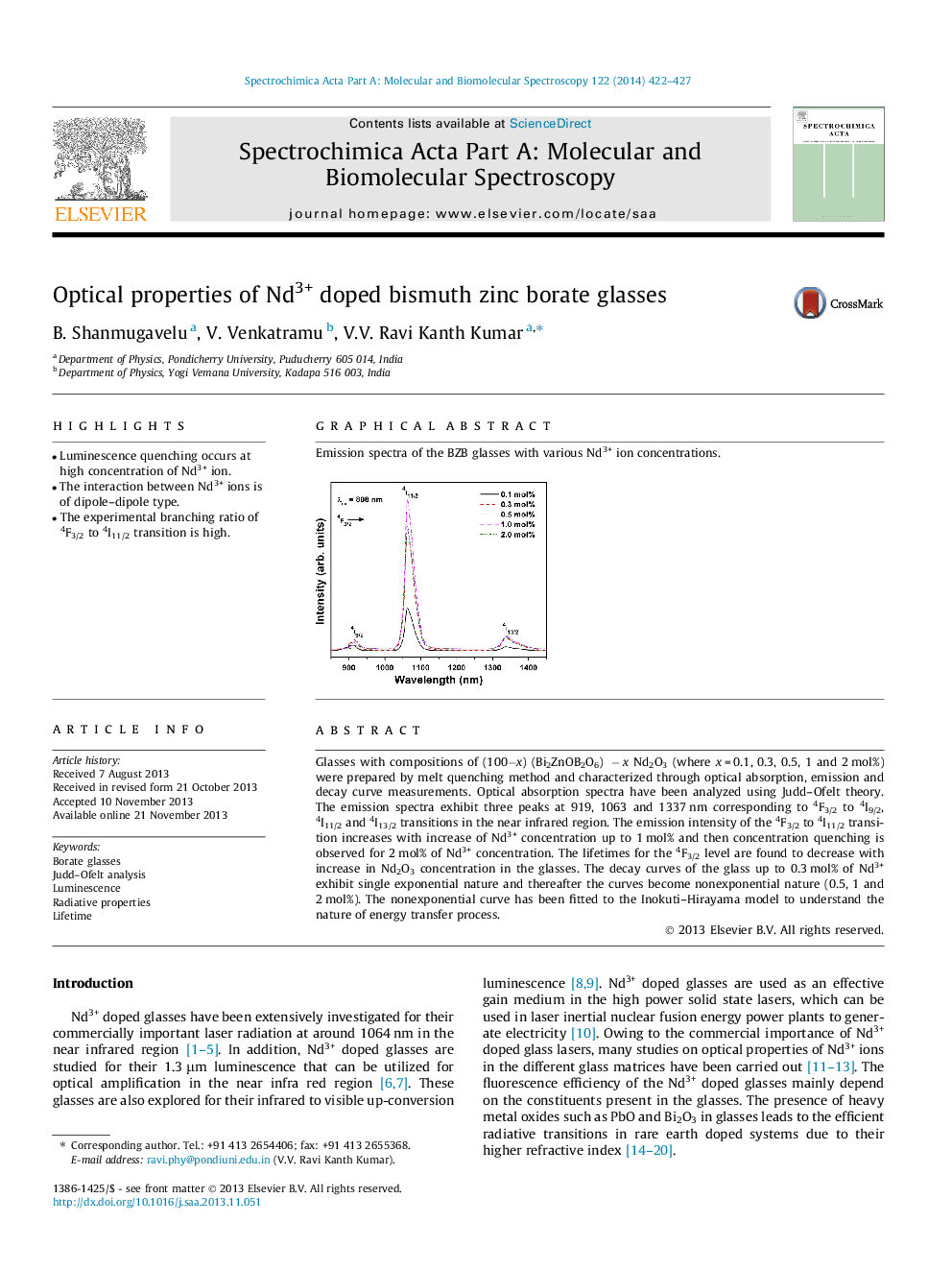| کد مقاله | کد نشریه | سال انتشار | مقاله انگلیسی | نسخه تمام متن |
|---|---|---|---|---|
| 1230266 | 1495246 | 2014 | 6 صفحه PDF | دانلود رایگان |

• Luminescence quenching occurs at high concentration of Nd3+ ion.
• The interaction between Nd3+ ions is of dipole–dipole type.
• The experimental branching ratio of 4F3/2 to 4I11/2 transition is high.
Glasses with compositions of (100−x) (Bi2ZnOB2O6) − x Nd2O3 (where x = 0.1, 0.3, 0.5, 1 and 2 mol%) were prepared by melt quenching method and characterized through optical absorption, emission and decay curve measurements. Optical absorption spectra have been analyzed using Judd–Ofelt theory. The emission spectra exhibit three peaks at 919, 1063 and 1337 nm corresponding to 4F3/2 to 4I9/2, 4I11/2 and 4I13/2 transitions in the near infrared region. The emission intensity of the 4F3/2 to 4I11/2 transition increases with increase of Nd3+ concentration up to 1 mol% and then concentration quenching is observed for 2 mol% of Nd3+ concentration. The lifetimes for the 4F3/2 level are found to decrease with increase in Nd2O3 concentration in the glasses. The decay curves of the glass up to 0.3 mol% of Nd3+ exhibit single exponential nature and thereafter the curves become nonexponential nature (0.5, 1 and 2 mol%). The nonexponential curve has been fitted to the Inokuti–Hirayama model to understand the nature of energy transfer process.
Emission spectra of the BZB glasses with various Nd3+ ion concentrations.Figure optionsDownload as PowerPoint slide
Journal: Spectrochimica Acta Part A: Molecular and Biomolecular Spectroscopy - Volume 122, 25 March 2014, Pages 422–427